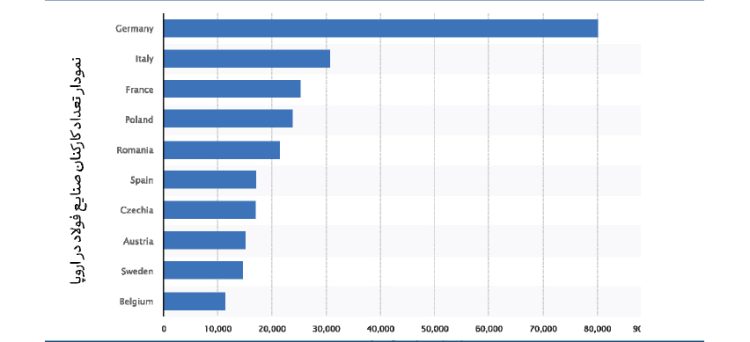Published by the Statista Research Department – October 9, 2024
The European Union witnessed significant changes in the steel sector in 2022. Germany, as the largest economy in the EU, maintained its key role in the industry, employing 80,200 workers in this sector alone. This figure is more than two and a half times the workforce in Italy, the second-largest steel producer in the union.
The Decline in the European Union’s Share of Global Steel Production
While China continues to dominate as the largest steel producer, accounting for over half of global steel production, the European Union’s share of global production has declined to 7.2%. This decrease is driven by intense global market competition, a significant rise in production levels in lower-cost countries, and efforts by producers to reduce their own costs.
Steel Consumption Destinations: Dependency on the Construction Industry
In 2022, the construction industry remained the largest consumer of steel produced in the European Union, accounting for 37% of total steel consumption. This industry plays a crucial role in driving steel demand due to its significant need for metal alloys in assembling and maintaining infrastructure projects. Steel consumption in this sector far surpasses that of the automotive and mechanical engineering industries, highlighting the extensive influence of the construction sector on the steel market.
Decline in Employment in the European Steel Industry
Employment in the steel industry of the EU-27 countries has generally declined, reaching 305,599 people in 2022, a decrease from the previous year, indicating a downward trend in the industry. The reasons for this decline can be found in the aftermath of the COVID-19 pandemic, the Russia-Ukraine war, and the global energy crisis. These factors, particularly in the automotive sector, one of the largest consumers of steel, have had significant negative impacts.
The Future Outlook of the European Steel Industry
Given the challenges ahead, the European steel industry requires innovative approaches that lead to cost reduction and increased productivity. The use of new technologies, improving efficiency, and reducing environmental impacts are key steps that can provide a more sustainable future for the industry.
Ultimately, economic conditions and global policies can have significant impacts on the European steel industry, and the countries within the union will inevitably have to embrace and adapt to global changes.
Steel world Review








